Choosing skins for the kitchen: design, size, type of print
How to create an original kitchen interior and organize a work area as spectacular as possible? Almost everyone who asks these questions going to make repairs. Today, skins, which differ excellent operational and external data. It is immediately worth noting that today the most widely used are glass skins, and when it comes to skins, they are meant, although there are still plastic and hardboard panels. In any case, this is the original decoration of any the kitchenbut how to choose skins, and what characteristics to pay attention to?
The very word "skinned" came from the English "skin", which means "sheathe". In a broad sense these are any decorative panels that can be made of various materials: glass, PVC, MDFmetal etc. When it comes to organizing the kitchen space, then under the skin means decorative panels, which clad apron, i.e. work area. And since plastic panels do not perform in the best way, then glass skins are becoming more and more popular. This has led to today, skins mean glass panels, and we will stop our attention on them.
Advantages and disadvantages
In order not to mislead anyone and not to describe glass skins as an ideal material, one should note its strengths and weaknesses. so, the advantages include:
- appearance, because any image can be applied to glass, made it voluminous, highlighted, thereby obtaining an incredible visual effect. Thus, you can transform even the smallest kitchen, set the room a certain mood;
- moisture resistancethat for finishing materials in the working area is the first and most important requirement;
- resistance to temperature extremes;
- production speed;
- high installation speed. If you have to spend enough time and effort on the installation of ceramic tiles, then skins can be attached in an hour;
- easy care;
- durability;
- high strength.
The main disadvantages:
- high price, because tempered thick glass with a seal printed on it cannot be cheap;
- though glass skin care simple but he should be regularotherwise, the surface from and to will be covered by spray marks and fingerprints.
Many attribute the disadvantages to the fact that an incorrectly selected pattern can quickly get bored, but this is typical for any type of finish.
Most often, skins decorate high-tech, techno, modern, and for classic interiors they are also suitable, because you can choose a panel with a plain pattern or with imitation of natural materials: stone or wood.
For skinal use tempered glass with a thickness of at least 6 mm. It is several times stronger than usual, withstands enormous loads, is not afraid of temperature changes, it is difficult to break, and with a strong blow it crumbles into many fragments with smooth edges that are not able to harm a person. Depending on preferences, you can choose frosted or clear glass.
Skinali are also made of plastic and hardboard. These are more budget options, which differ not by the highest durability, they are less practical, and the drawings for them are mostly standard.
The method of applying the image
The necessary image can be applied to glass skins in several ways, the most popular of which are:
- UV printing;
- silk screen printing;
- sandblasting;
- use of decorative film.
Via ultraviolet printing absolutely any pattern can be applied to glass, and ink hardens only under the influence of UV radiation. Thanks to this, the finished drawing can be obtained very quickly, it will not be affected by solar radiation, it will not emit any harmful substances, and the colors are more saturated and bright. The image is not blurry, not afraid of high temperatures and humidity. This is one of the most advanced types of printing today, but you will have to pay a lot for skins painted using similar technology. Today they also use stereo printingfor which ink is needed with 3D effect: The result is a voluminous picture that can add extra space to the kitchen.
Silk screen printing involves the use of injectable ink. They in the process of tempering glass become one with him, which determines the performance of the material. Thus, any pattern can be applied to the glass, it comes out bright and saturated, and the transparency of the colors is regulated over a wide range. This printing method is more economical than the previous one, but the durability of the drawing is slightly inferior to UV printing. Other disadvantages include the presence of an odor of acetone in the first days after drawing the picture, as well as the fading of the picture with improper care. Otherwise, skins stained using this technology come out excellent: bright, resistant to external negative influences and with a small volume effect
Thanks sandblast printing you can get the real volume, not its effect, since abrasive particles remove a small layer of glass. The result is a relief three-dimensional drawing, with which you can depict anything you want, and stencils come to the rescue when creating a specific ornament. In a similar way, you can create a pattern, landscape, still life, etc., and the carved parts can additionally be painted. When it comes to organizing a kitchen apron, a drawing is applied to the inside of the glass so that the finish is as hygienic and easy to care for. Since sandblast printing itself does not provide for the use of paints, finished skins are as durable as possible.
The cheapest way to apply a picture to glass skins is to use tinting or stained glass film. The pattern can be anything and include convex parts. A similar technology for decorating glass skins is available, but the finished drawing is not the most durable, but during operation it can begin to fade.
A great way to further decorate your kitchen is to create skinned backlight. If it is properly organized, then you can achieve amazing effects, and the picture on the skin can literally come to life.
Skin size
Naturally, the size of the skin should correspond to the size of the working area, but if you have a spacious kitchen, and the kitchen apron takes up a lot of space, then keep in mind that use of glass panels longer than 2.5 meters is undesirable. Firstly, it’s more difficult to work with them, it’s easier to damage them, and secondly, they are terribly inconvenient in terms of delivery: they won’t fit in the elevator, it’s difficult to bring them into the apartment, and their installation is generally difficult. For the organization of a spacious work area, it is better to use several glass panels: if the work is done by masters, the boundaries of their connection will be almost invisible.
Most often, skins are mounted with pass-through fasteners, and mount heads are masked so that they are practically invisible. They install skins already at the final stage of repair, and this process is very fast, and takes about one hour.An alternative mounting option is fixing with glue to the wall, but for this the glue itself must be of high quality, reliable and leave no residue.
Skinny design
The drawing on the glass skin can be anything: a plain surface, some kind of texture, landscape, abstraction, still life, and even your own photos. But it is important to remember that this element of the kitchen should not exist separately, but in harmony with other interior items. The simplest and most stylish solution is to use the same shades in the skin as for of furniture or kitchen finishes. Practically everyone can cope with such a task. If, for example, the walls are decorated in shades of green, then the glass panel can be decorated with a picture of grass or apples.
If there is a desire to design a kitchen non-standard, then skins, you can choose a contrasting color in relation to other interior details, and you can arrange a working area with a kitchen set in one color, and a dining area in another: you get spectacular zoning. But when working with contrasting colors, it is better to ask the designer for advice so as not to end up with a tasteless kitchen. It is also worth noting that for small kitchens it is better not to use skins of dark colors, and the landscapes of night cities will not be entirely appropriate - it is better to stay in light shades.
Think ahead you need not only the color scheme and the image on the skin, but also location outlets and other holesif it is necessary to organize, for example, in the area of the kitchen apron railing. All this is important to inform the company engaged in the manufacture of your skin. Holes of the right size and shape are created in the glass before hardening, and then there will be no problems, but only then, when the skin is installed, it will be impossible to organize additional holes. But do not overdo it: volumetric railing, for example, can close most of the skin.
In conclusion
Glass skins are a suitable material for the kitchen in appearance and performance, and the high price is more than offset by durability and strength. Such an element of decoration will make the kitchen original, bring zest and the illusion of additional space into it. The main thing is to choose the right pattern and pre-think about the location of all possible holes in working area.

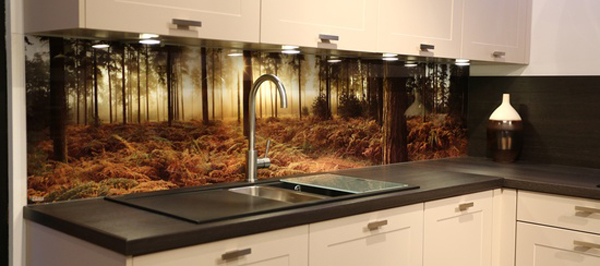
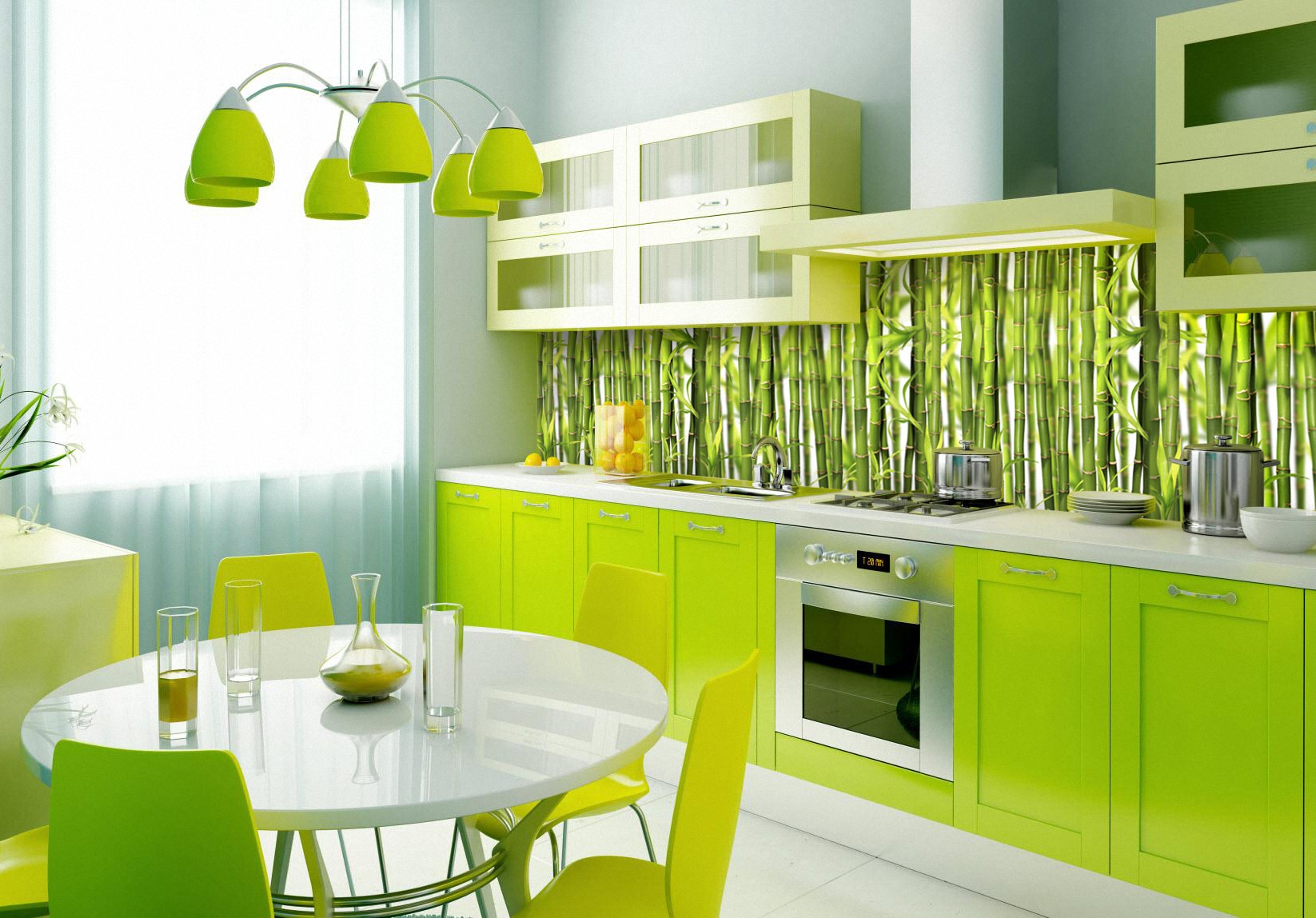
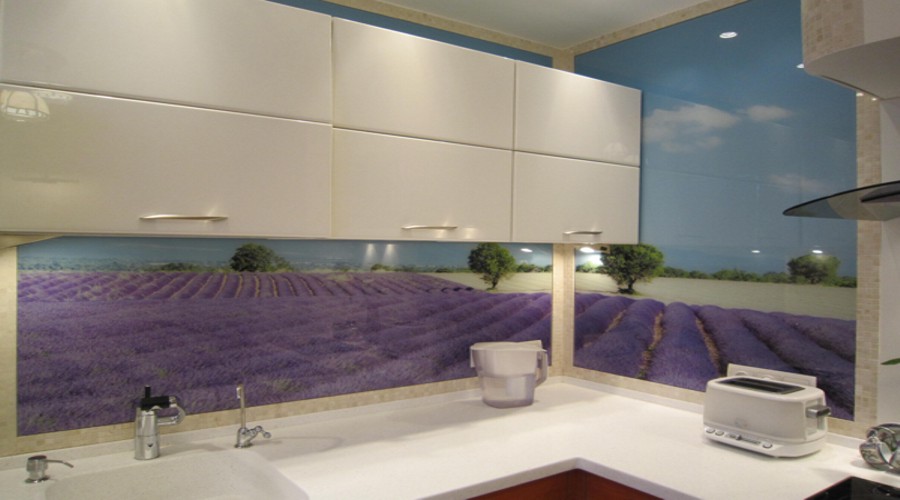
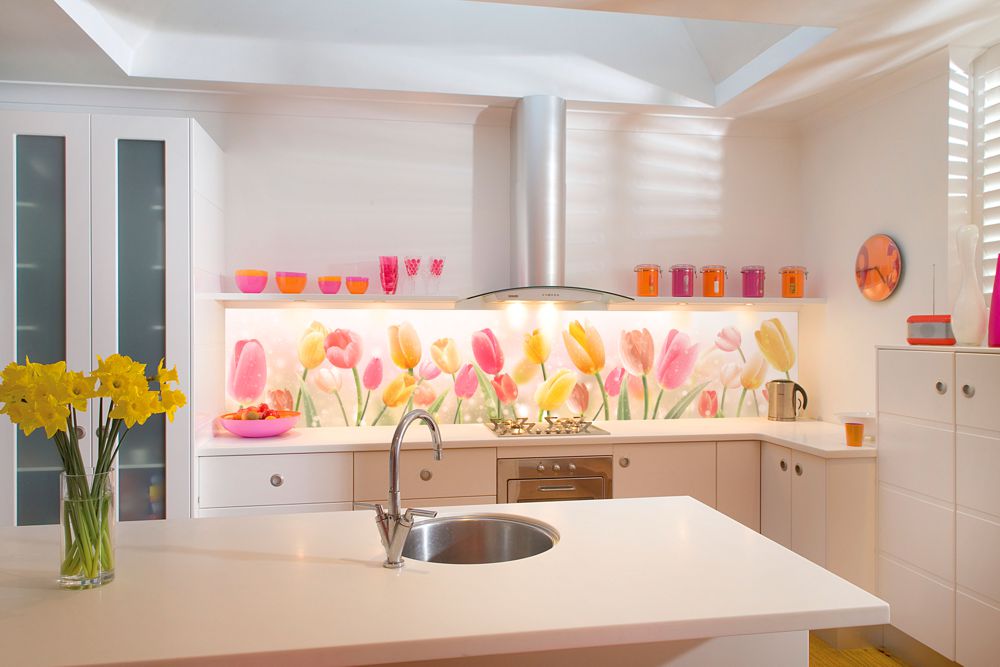
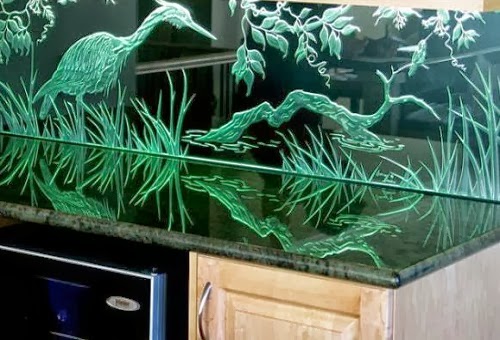
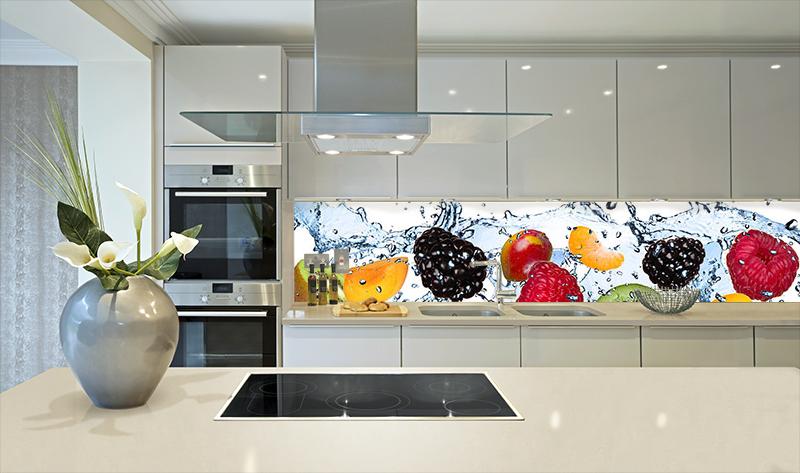
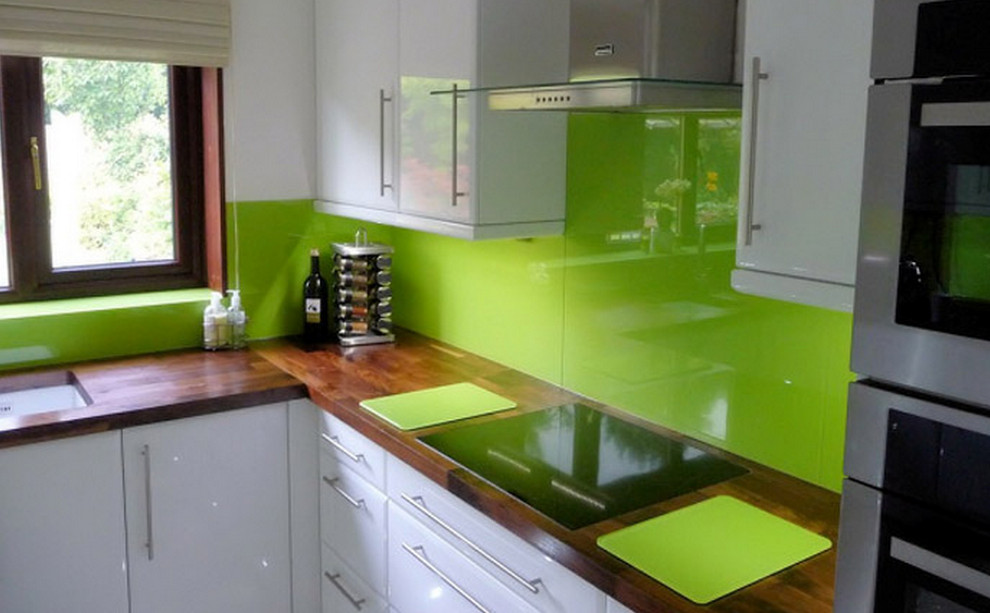
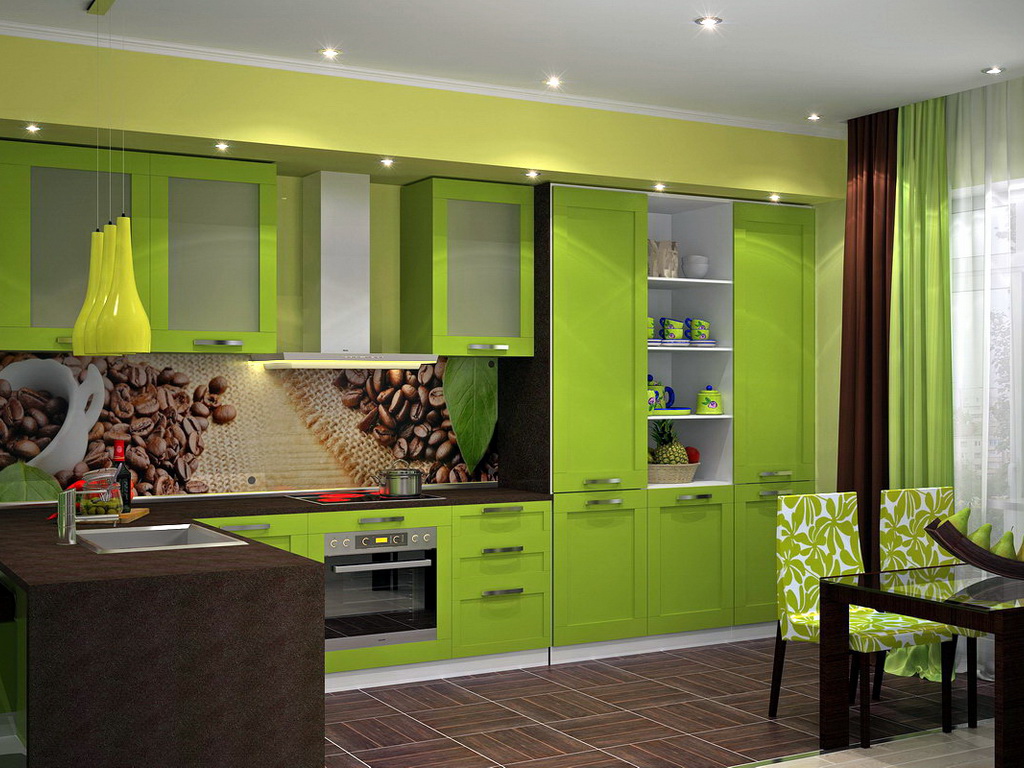
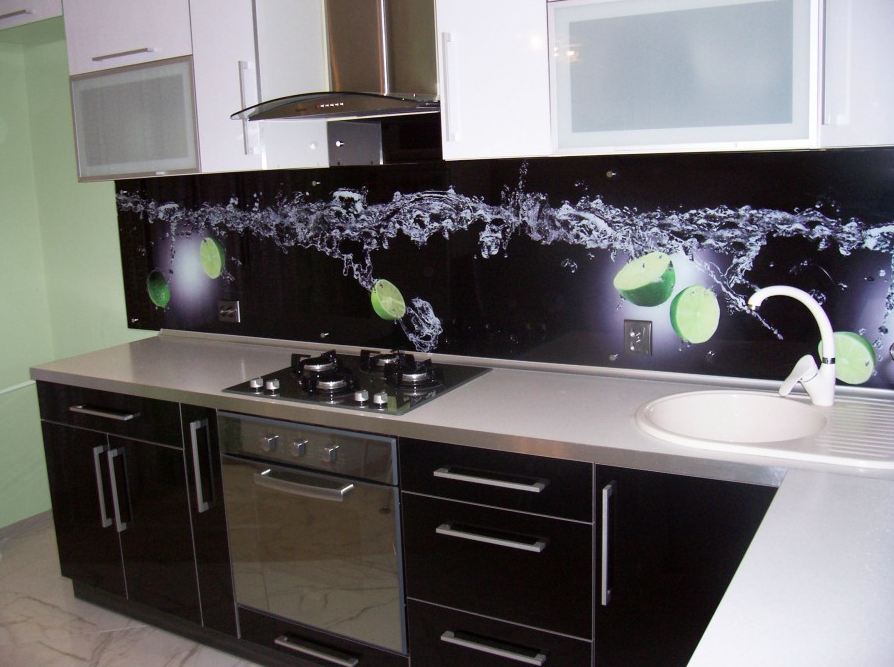
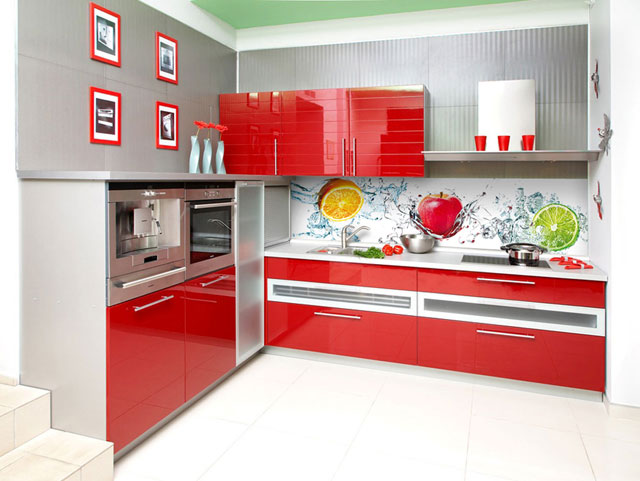
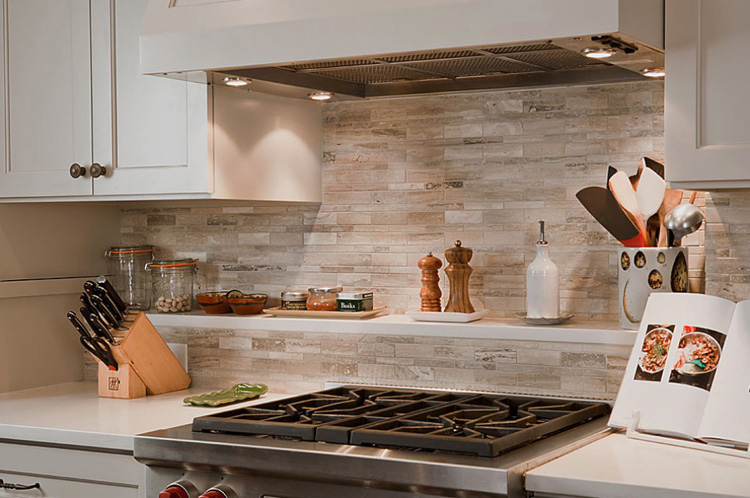
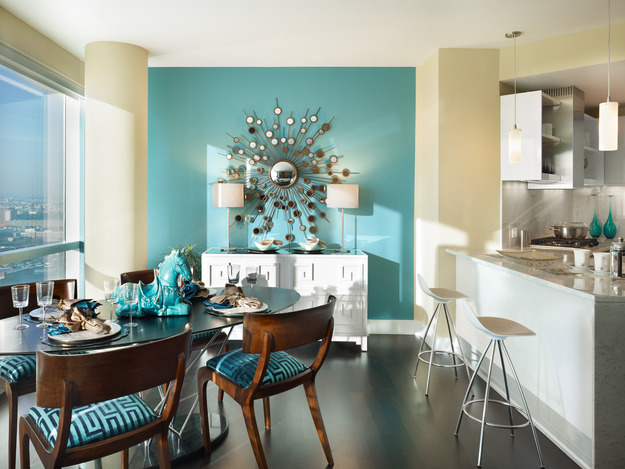
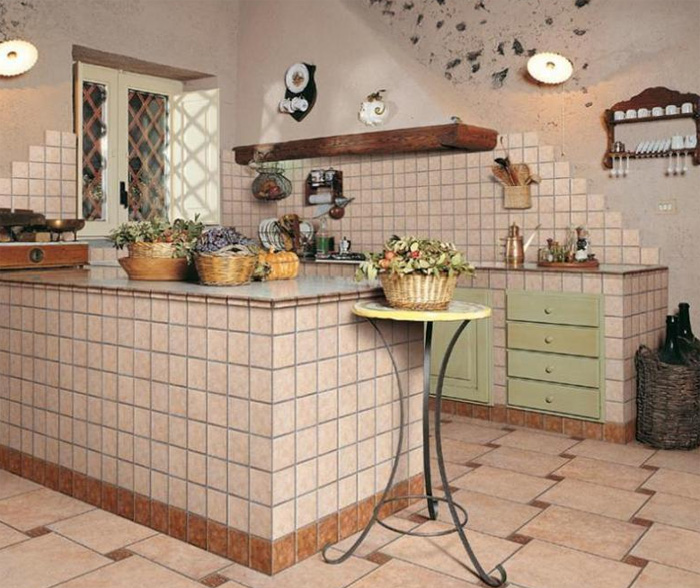
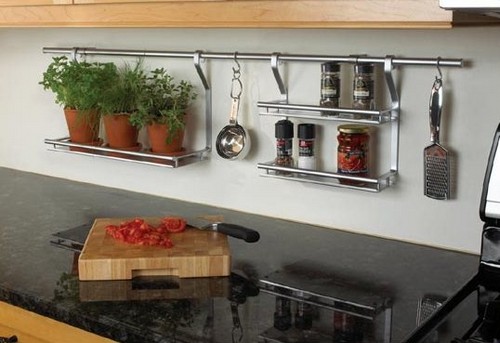
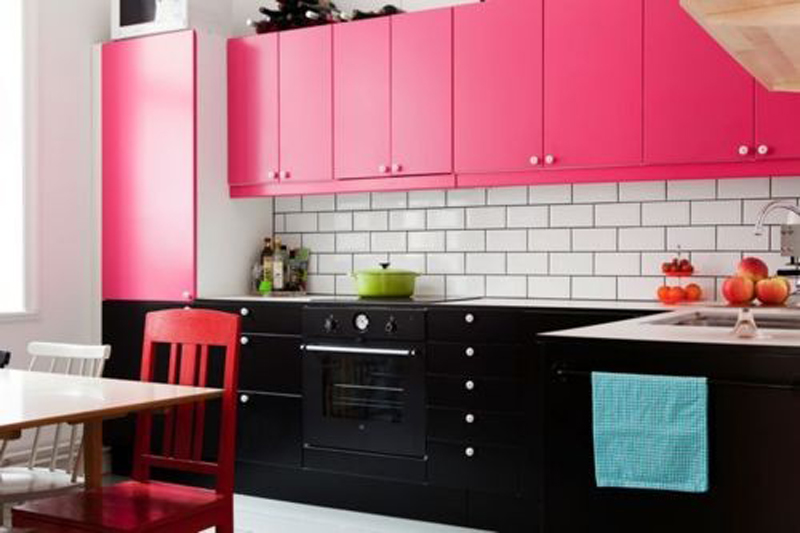
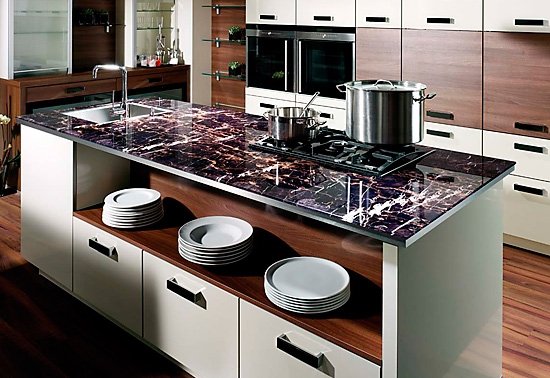
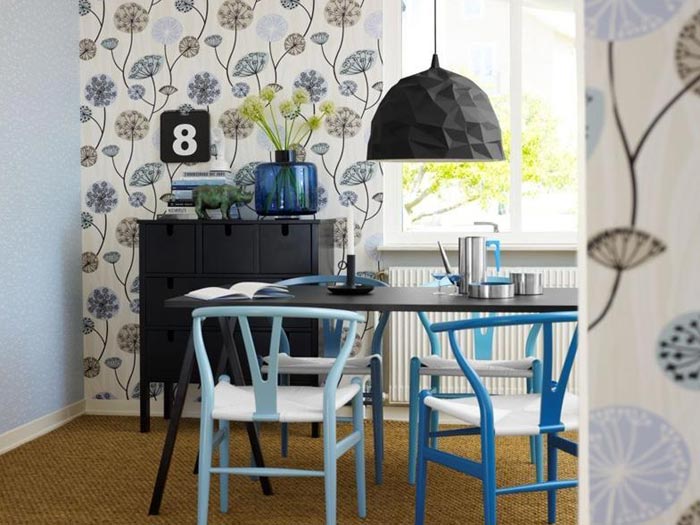
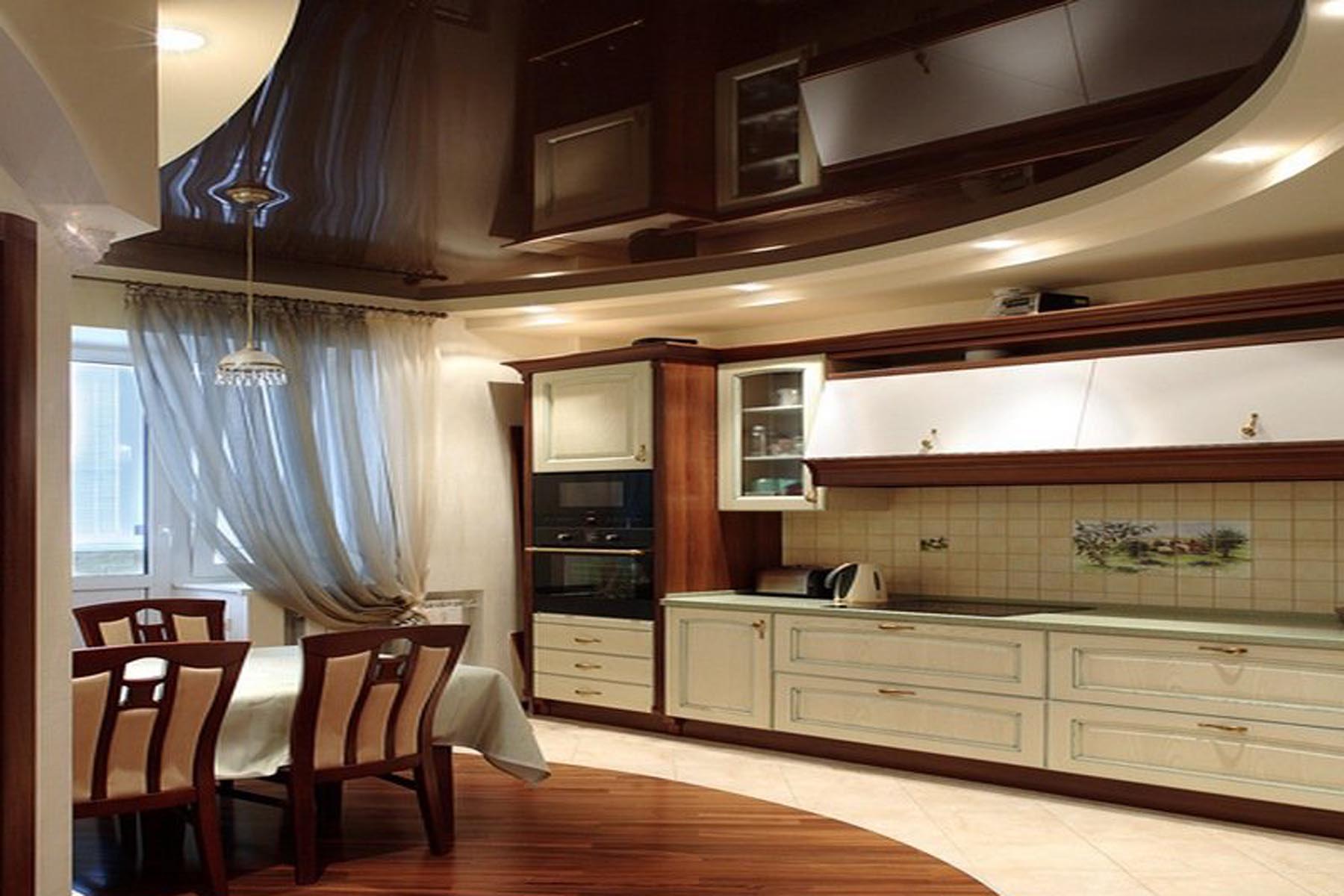
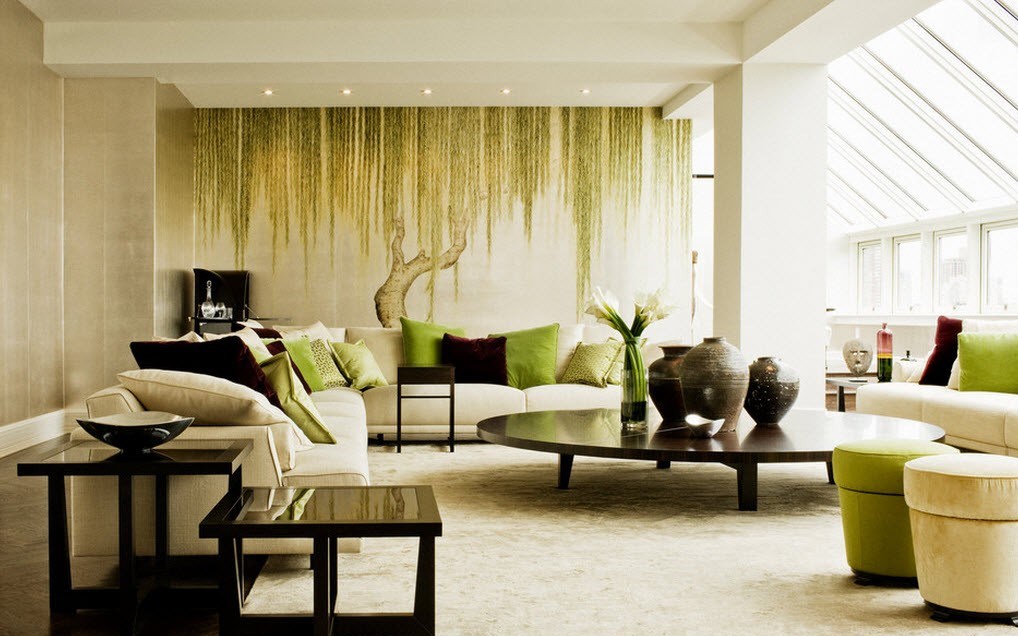
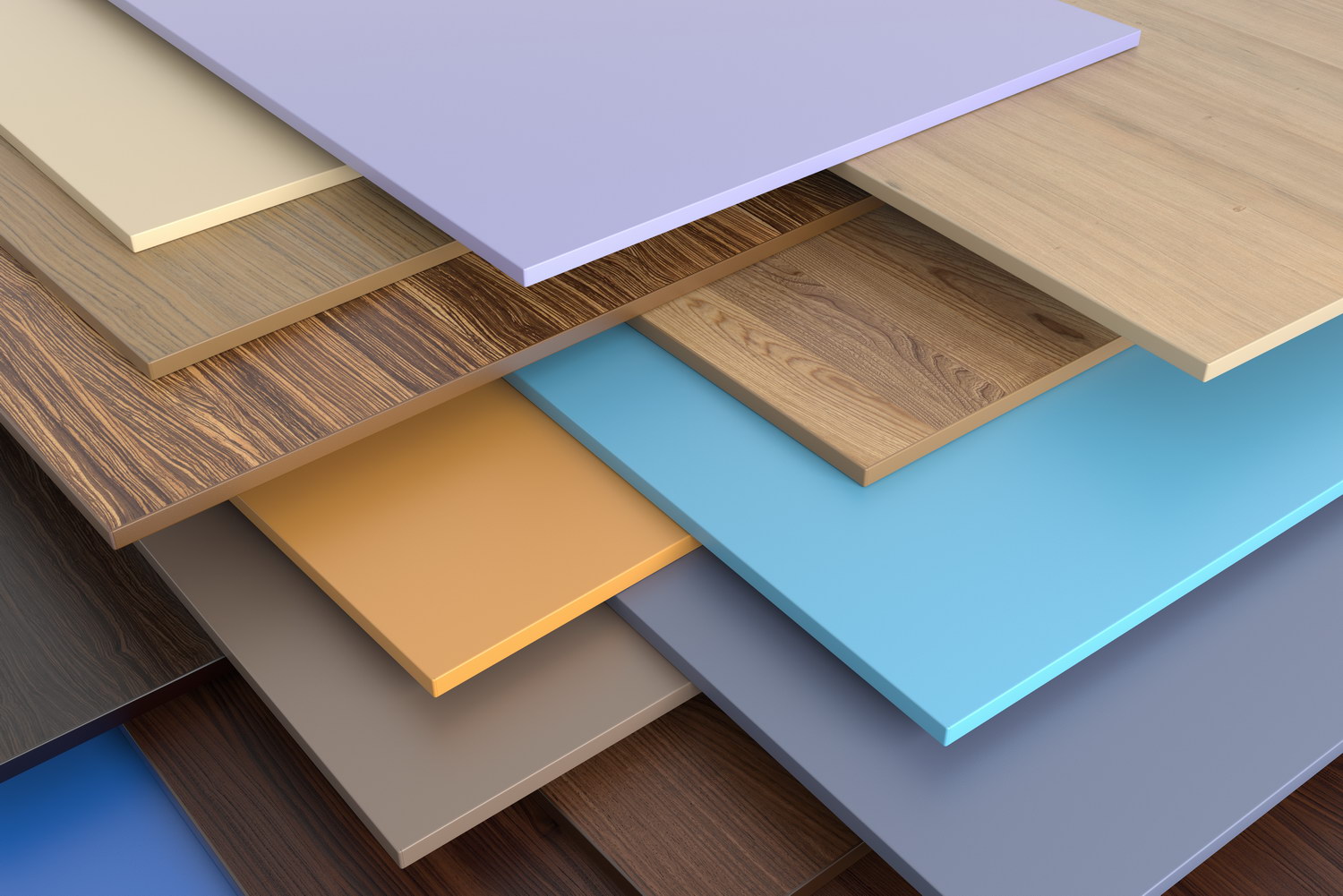
The design of the mosaic kitchen apron and its performance also depend on the materials that make up the composition.